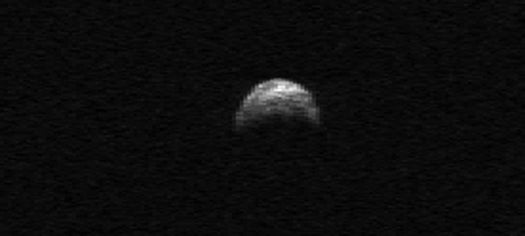In November, A Massive Asteroid Will Fly Very Close To Earth
Just this week, the crew aboard the International Space Station had to take shelter in its emergency quarters after a...

Just this week, the crew aboard the International Space Station had to take shelter in its emergency quarters after a piece of a destroyed Chinese satellite passed “danger close” to the orbiting outpost, sharply reminding the space community of the dangers posed by space debris. The rest of us will get our reminder in November, when a massive asteroid will make a close flyby of Earth at a distance of just 0.85 lunar distances.
Asteroid 2005 YU55 was discovered six years ago and does not pose a collision risk, but it is passing close enough to be deemed a “potentially hazardous asteroid” by the Minor Planet Center in Cambridge, Mass. And in the grand scheme of the universe–or even the solar system–it will pass extremely close to the home planet.
At 1,300 feet in diameter, the slow-rotating asteroid would not be overlooked if it happened to slam into the planet. Its flyby, which will begin unfolding during Nov. 8, will mark the closest-ever observation ever of an object this large.
So how are scientists reacting to this cosmic near miss? With glee, naturally. Extensive plans are being laid to radar image the slow-rotating hell out the rock as it passes, possibly down to resolutions nearing just 15 feet. That will help them build better 3-D models of YU55, as well as project its density and shape.
The good news for the rest of us: increased knowledge of the rock’s spin rate, shape, density, etc. will also improve researchers’ modeling of its whereabouts when it’s not around, enabling better prediction models stretching for decades or even centuries. That way should YU55 come around again we’ll perhaps have a more precise idea of its path, and a better than six-year heads-up.